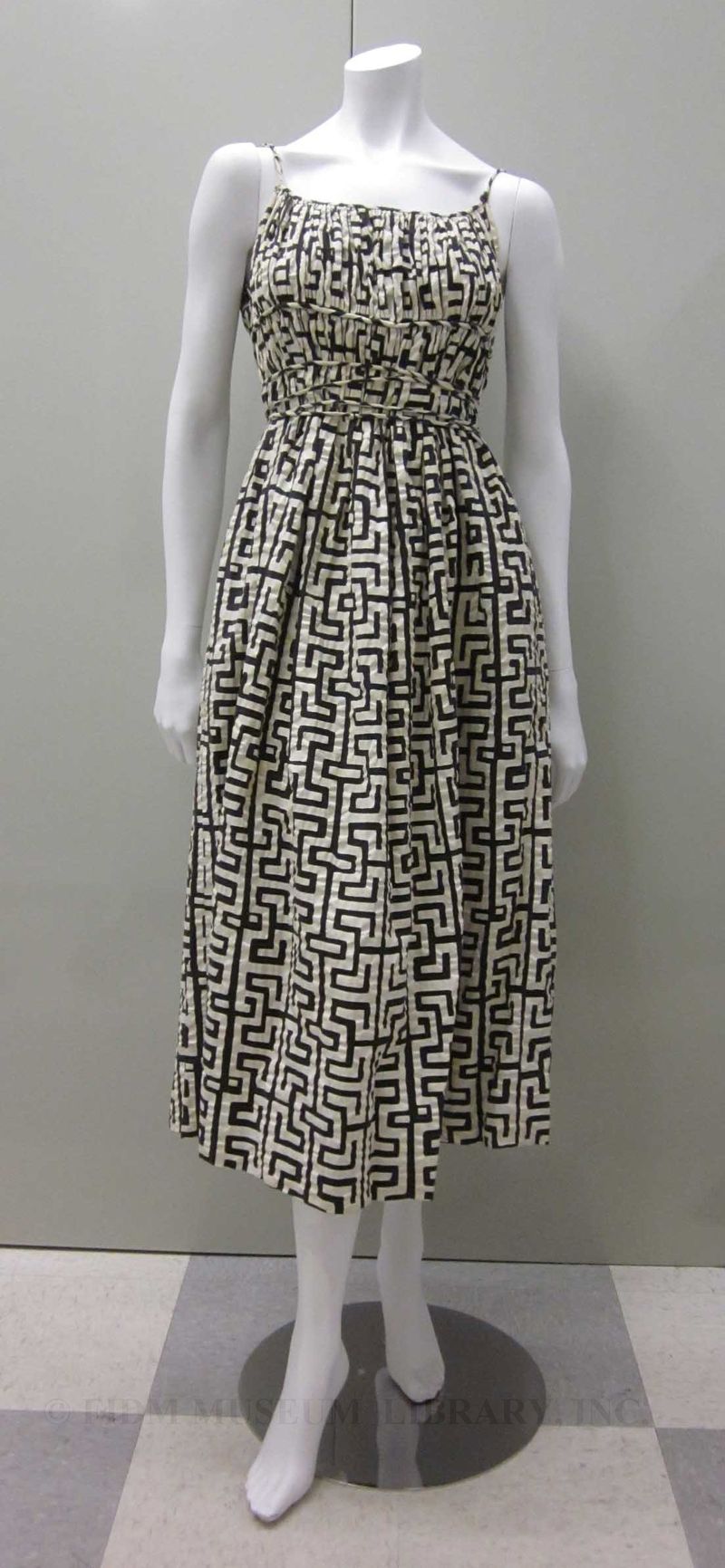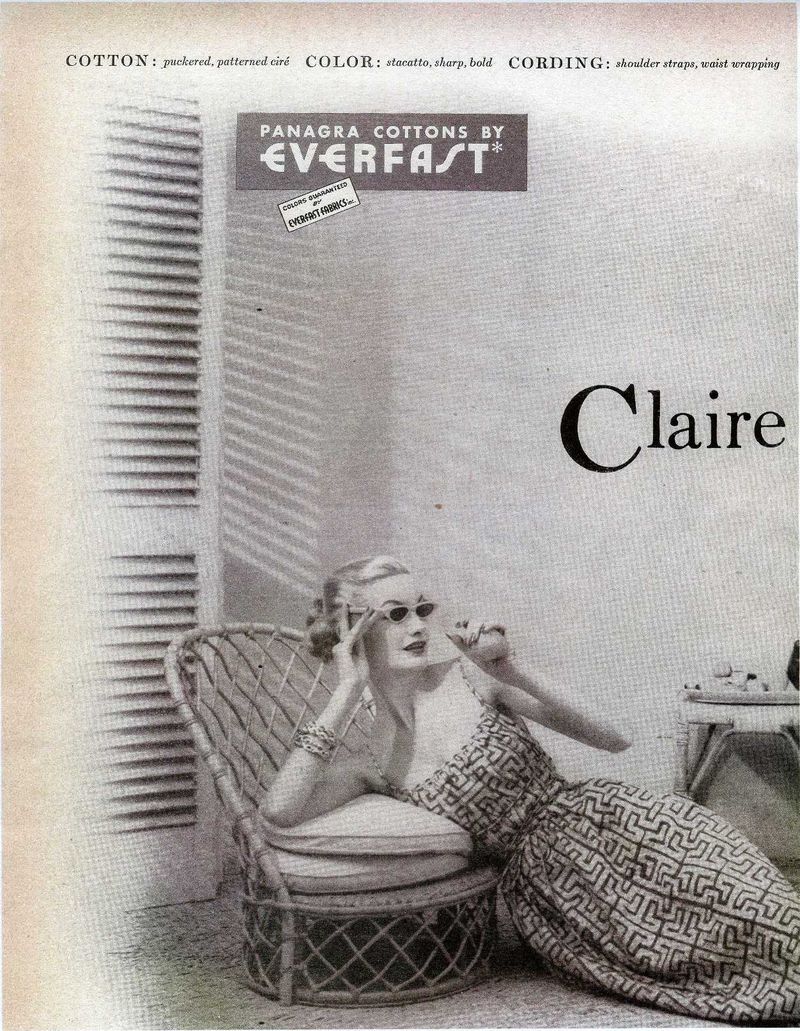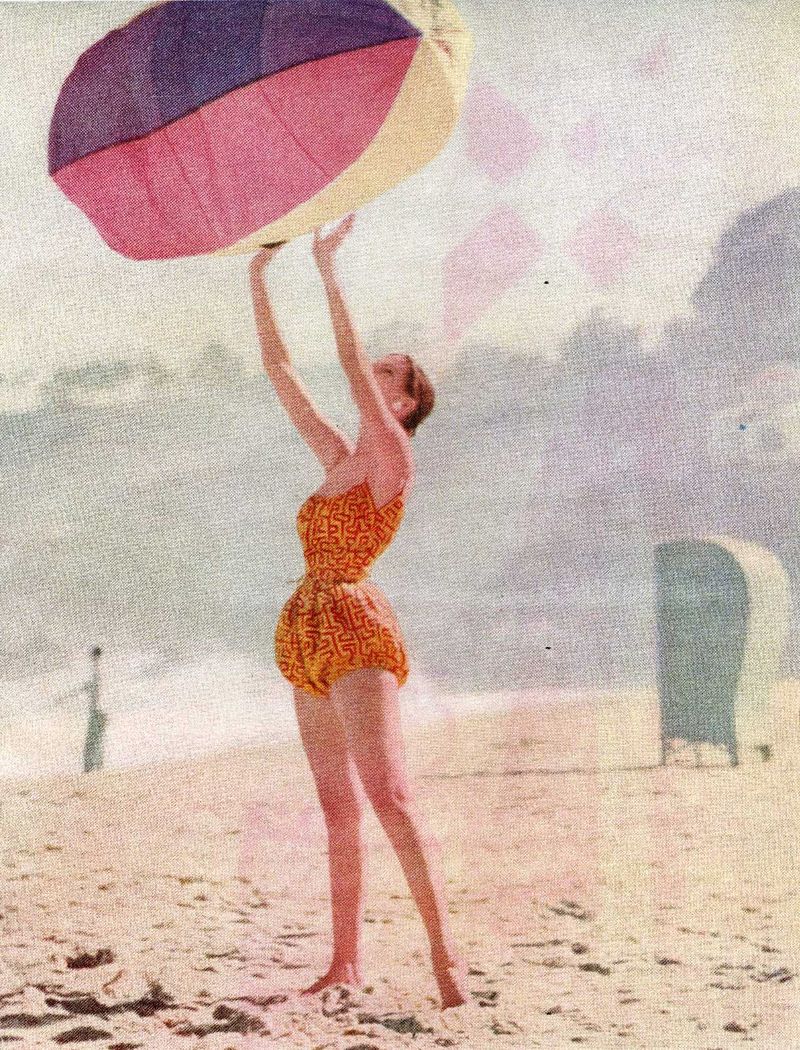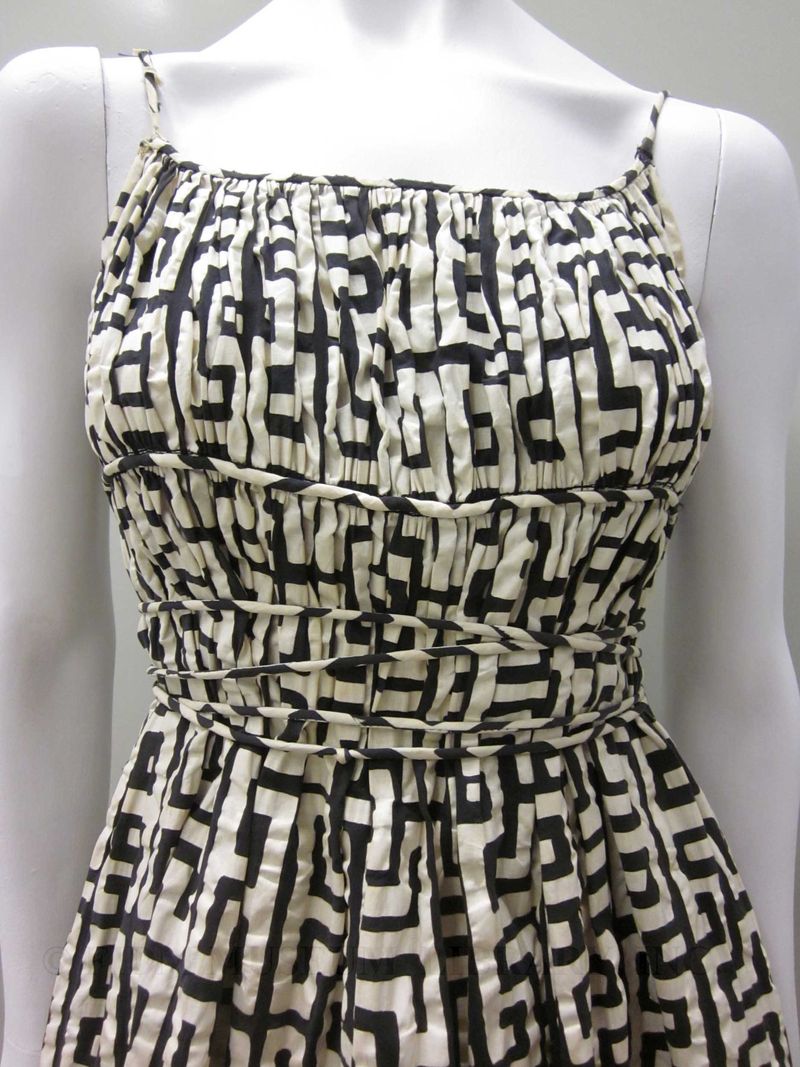The FIDM Museum compact storage facility is filled with wonders. Charles Worth's c. 1878 reception gown, a beaded evening sheath by Alber Elbaz for Lanvin, Fortuny textiles and Herve Leger's mini-jumpsuit share racks and boxes with thousands of additional garments and accessories. As the caretakers of the FIDM Museum collection, we treat each object with equal attention to its longevity and well-being. That said, it's almost impossible for those of us who work with the collection to avoid having a few favorites each. One of mine is this graphic Claire McCardell cotton dress.
 Claire McCardell
Claire McCardell
1952
Gift of Norma Carnahm
77.1948.008.16
Claire McCardell worked from the principle that style and comfort were not mutually exclusive. Using wash-and-wear fabrics, McCardell designed easy-wearing, unconstructed garments that exuded stylish functionality. Though McCardell's career spanned the 1930s to 1958, years in which corsets and other understructures were widely worn, she rejected confining foundation garments. McCardell even went so far as requesting that models not wear undergarments when modeling her designs! Rather than creating garments that demanded a specific body shape, McCardell incorporated integral pleats, wraps, ties and sashes that could individualize a garment's fit to a wearer's specific proportions. McCardell also used adjustable belts to achieve this same end. The printed cotton McCardell dress pictured here has extremely long cord ties that can be wrapped multiple times around the wearer's waist to create a perfect fit.
When using patterns, McCardell typically focused on graphic plaids or stripes. The pattern here is a variation on the classic Greek key or Greek fret motif. A truly ancient pattern, the Greek key is composed of a continuous squared line, often enclosed in a border. The pattern appears frequently in ancient Greek and Roman art and architecture, but is not unique to those cultures. Similar motifs appear in the decorative arts of Latin America and many other regions. It's a favorite motif in fashion, appearing on objects past and present, including 19th century boots, a 1929 evening bag, and many other garments from the 18th, 19th and 20th centuries. The origins of the print aren't clear, but it is thought to represent eternity and/or commemorate the Greek myth of Theseus and the Minotaur.  This Claire McCardell for Everfast advertisement appeared in the December 1952 issue of Vogue. The advertisement was published in black and white. Image courtesy of the FIDM Library.
This Claire McCardell for Everfast advertisement appeared in the December 1952 issue of Vogue. The advertisement was published in black and white. Image courtesy of the FIDM Library.
The fabric McCardell used for her black and white dress was produced by Everfast. Throughout her career, McCardell sought out unusual textiles and patterns, sometimes advising textile mills on their seasonal production. As the ad suggests, McCardell wasn't shy about endorsing specific textile companies. Everfast and McCardell probably shared production costs for this advertisement, thus generating inexpensive publicity for both parties.1
McCardell and Everfast received additional exposure for their collaboration through a Vogue fashion editorial. Both the advertisement above and the editorial image below appeared in the December 1952 issue of Vogue magazine. The playful image below features one of McCardell's classic playsuits in a red/orange colorway.
 This image of McCardell's playsuit appeared in the December 1952 issue of Vogue. Image courtesy of the FIDM Library.
This image of McCardell's playsuit appeared in the December 1952 issue of Vogue. Image courtesy of the FIDM Library.
1 McCardell's influence on and relationships with textile manufacturers are detailed in Yohannan, Kohle and Nancy Wolf. Claire McCardell: Redefining Modernism. Abrams Inc.: New York, 1998.


